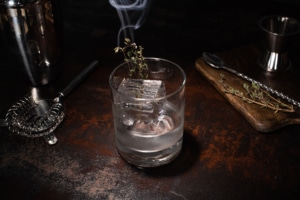DCPA NEWS CENTER
Enjoy the best stories and perspectives from the theatre world today.
Enjoy the best stories and perspectives from the theatre world today.

When you say you grew up in a “dry county” in the South, the retort is generally, “does that mean you don’t have indoor plumbing?”
No, worse.
It means alcohol isn’t sold in your county. Dry counties are reminiscent of Prohibition, a time in the United States spanning from January 17, 1920 through December 5, 1933. Nearly 14 years…a sobering thought indeed.
But poured on also layered in their own restrictions. When women secured the right to vote in Colorado, many joined antialcohol Progressive voters to ban alcohol statewide. By 1907, Temperance reformers passed anti-saloon legislation to tamp down on gambling, prostitution, and immoral behavior. Referred to as a “bone-dry”, local-option law, territories within the state could ban the sale of alcohol in their area. According to Colorado LegiSource, “20 out of 25 counties that voted on the question of whether to become anti-saloon territories, chose to become anti-saloon territories.”
Leave it to residents of Denver to dig in and toss back. Locals refused to put down their bottles until 1914 when statewide legislation was adopted that restricted the sale of alcohol “except for medicinal or sacramental reasons.” Not one to back down, the City and County of Denver bellied up to the bar and cited conflicting laws while continuing to allow sales to businesses, ultimately pitting city against the state. Known as the People ex rel. Carlson v. City Council of Denver, the issue was decided by the Colorado Supreme Court, which found in favor of the new state law. No booze.
Over the next few years, the Colorado General Assembly expanded its restrictions to ban possession, distribution, and advertising of intoxicating liquors; empowered law enforcement to search, seize, and destroy liquor; limited the importation of liquor; set limits of how much liquor a household could possess; and, ultimately, prohibited anyone except druggists to possess intoxicating liquors.
A full six years later, the Temperance Movement led Congress to pass the 18th Amendment to the U.S. Constitution in 1920, which prohibited the manufacture, sale or transportation of intoxicating liquors.
Undaunted, people continued to imbibe. In fact, arrests for drunk and disorderly conduct rose, bootleggers thrived, government corruption ran rampant, and gangsters’ influence grew. Across the nation, organized crime surged and gained power and influence. Locally, gangsters such as Joe Berry, Joe Roma, Joe Varra, and the Smaldone family got a leg up (yes, a bootleg) in the illegal liquor trade, while corrupt law enforcement officers were apt to take a bribe or confiscate “evidence” collected in raids. From crime organizations to parents, the production of bootleg liquor surged. “Dry agents,” “purity squads” and “moral crusaders” were little help against a determined population.
Soon, one of the earliest states to go dry was ready to quench its thirst. In 1932, Colorado passed Amendment Seven, which rescinded its ban on alcohol. Within 24 hours, beer sales alone raked in more than $200,000 (or $4 million in today’s economy). While it was then legal to sell in state, it wasn’t until the following year with passage of the 21st Amendment to the U.S. Constitution that Prohibition ended nationwide. More than 90 years later, Colorado is commonly known as the microbrew capital of the world and, according to Colorado Encyclopedia, craft beer was voted the state’s most iconic drink.
